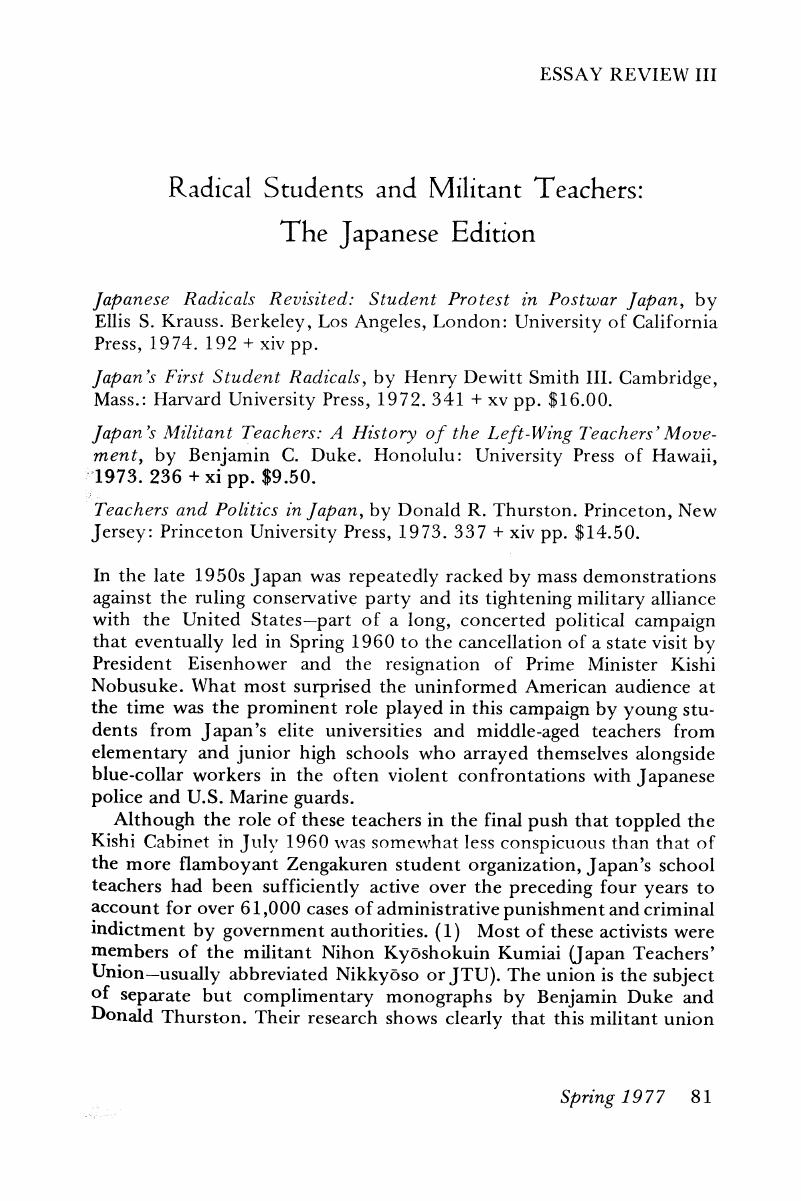No CrossRef data available.
Published online by Cambridge University Press: 24 February 2017

1. Benjamin, C. Duke Japan's Militant Teachers (Honolulu, 1973), Table 8, p. 154; see also Thurston, Donald R., Teachers and Politics in Japan (Princeton, N.J., 1973), p. 183.Google Scholar
2. Thurston, , pp. 118–122, 248–257.Google Scholar
3. See especially Packard, George R. III, Protest in Tokyo: The Treaty Crisis of 1960 (Princeton, N.J., 1966); Cole, Allan B., Totten, George O., and Uyehara, Cecil H., Socialist Parties in Postwar Japan (New Haven and London, 1966); and Jon Halliday, A Political History of Japanese Capitalism (New York, 1975).Google Scholar
4. Duke, , pp. 100–101.Google Scholar
5. Ibid., pp. 201–202.Google Scholar
6. Thurston, , p. 167.Google Scholar
7. Ibid., p. 172.Google Scholar
8. Ibid., pp. 205–213.Google Scholar
9. Ibid., pp. 267–268.Google Scholar
10. Krauss, Ellis S., Japanese Radicals Revisited (Berkeley, Los Angeles, London, 1974), pp. 77–78.Google Scholar
11. Ibid., p. 70.Google Scholar
12. Ibid., pp. 65–67.Google Scholar
13. Ibid., p. 41.Google Scholar
14. Ibid., pp. 5–7.Google Scholar
15. Ibid., pp. 125–126.Google Scholar
16. Ibid., pp. 86–124.Google Scholar
17. See also Krauss, , pp. 53–54. It should be noted that Thurston carefully qualifies his discussion of the prewar period by warning the reader that “what follows is not necessarily reality but the JTU leadership's perception of reality” (p. 13).Google Scholar
18. Smith, Henry Dewitt II, Japan's First Radical Students (Cambridge, Mass., 1972), pp. 231–288.Google Scholar
19. Ibid., pp. 242–261.Google Scholar
20. Ibid., pp. 11, 103–106.Google Scholar